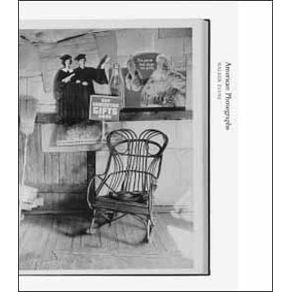'Walker Evans' American Photographs' is widely deemed the most important photobook ever published. Originally conceived to be a catalogue to accompany his one-man show at The Museum of Modern Art in 1938 (the first solo show MoMA had given to a photographer), it quickly became a document so definitive of its era that curator John Szarkowski wrote that "it was difficult to know now whether Walker Evans recorded the America of his youth, or invented it." The book opens with images that cite photography, immediately establishing a tension between medium and message, although it is certainly for the message that Evans has become famous: American Photographs points over and over again to the unhappy lot of the poor and the dispossessed in 1930s America. Lincoln Kirstein's accompanying essay (famous in its own right) declares: "What poet has said as much? Only newspapers, the writers of popular music, the technicians of advertising and radio have, in their blind energy accidentally, fortuitously, evoked for future historians such a powerful monument to our moment. And Evans' work has, in addition, intention, logic, continuity, climax, sense and perfection." American Photographs continues to go out of print for long stretches of time, and the first edition of Errata's 2009 spread-by-spread reprint followed suit. This revised edition of that volume presents the original 1938 edition with its 87 legendary black-and-white photographs (reproduced in full-page rather than quarter-page spreads), the classic Kirstein essay and a contemporary essay by Evans scholar John T. Hill.



